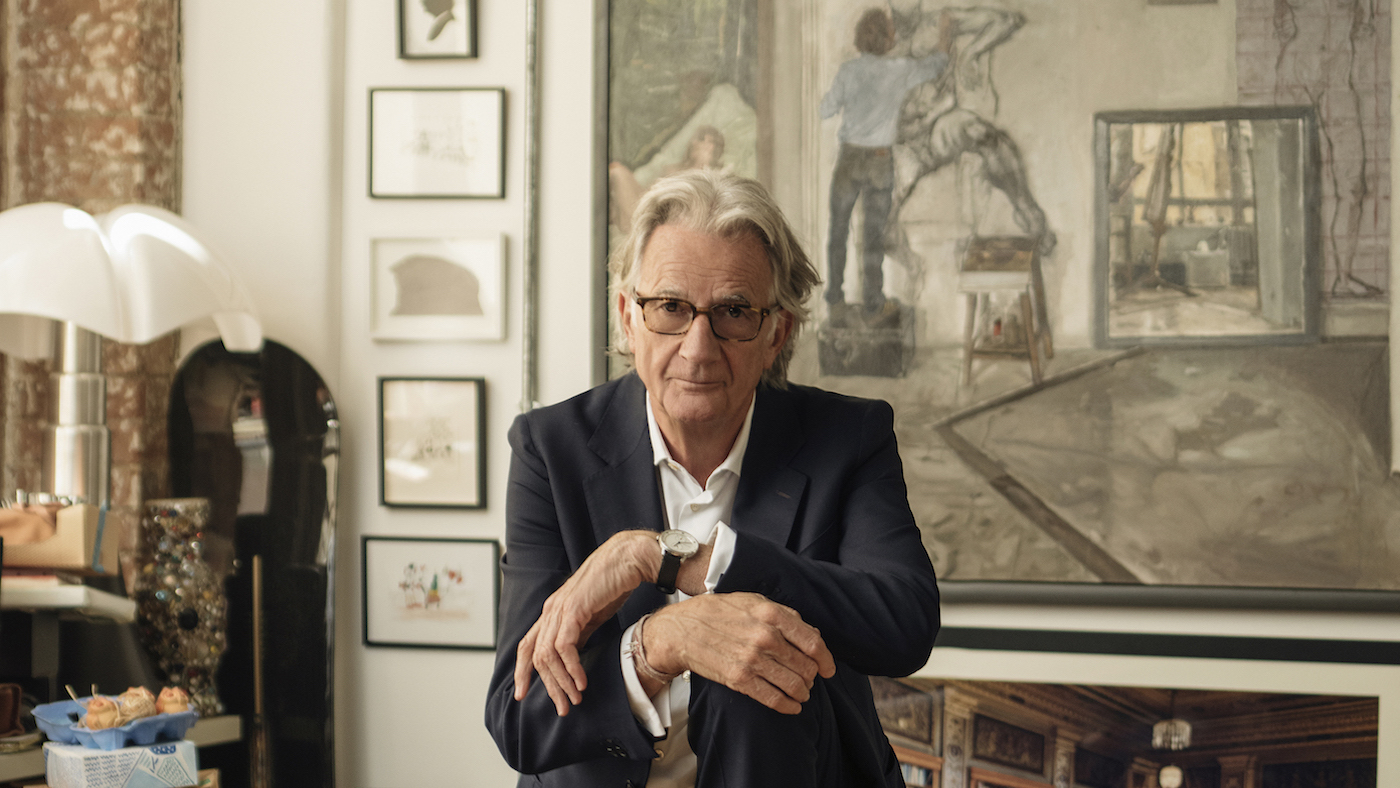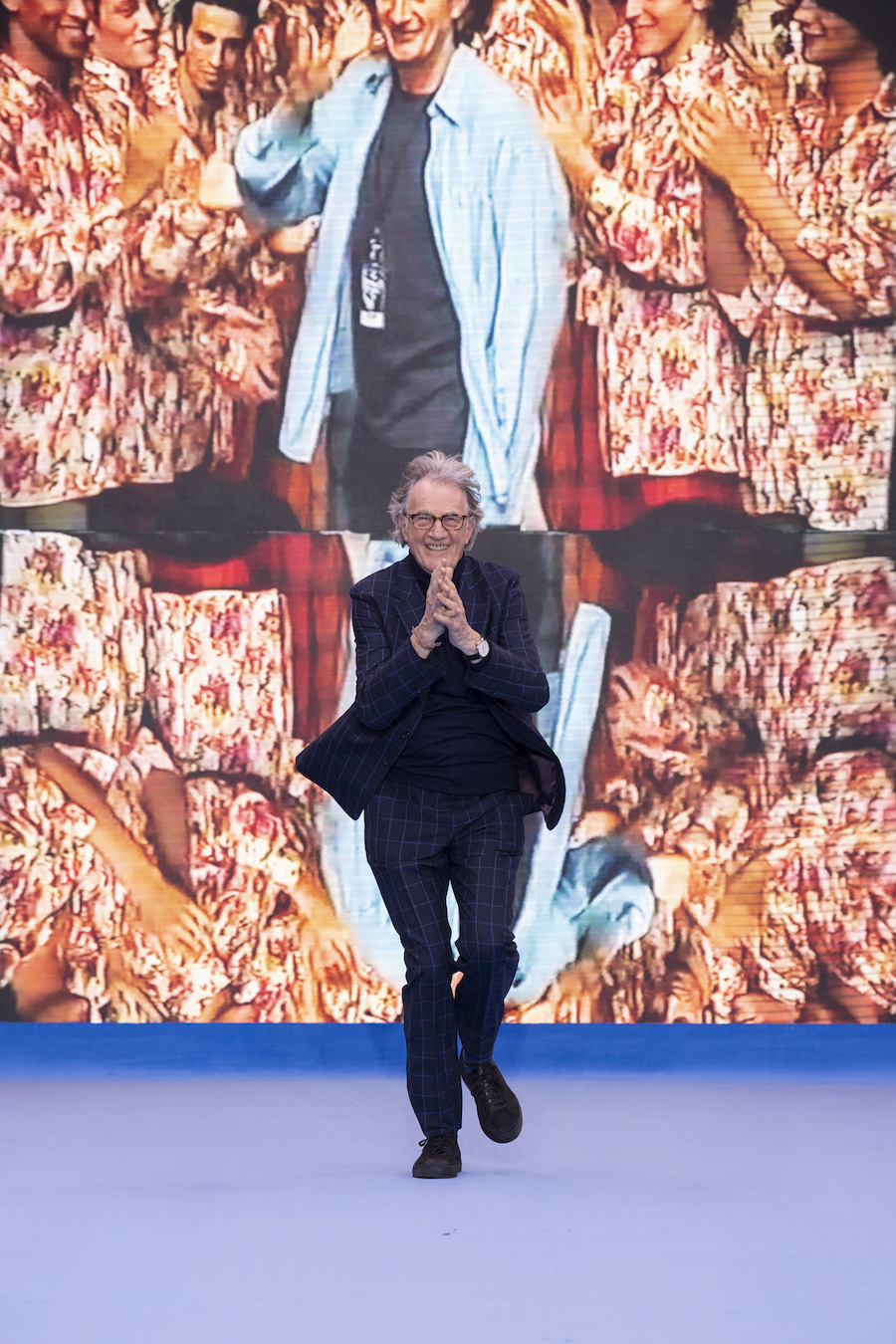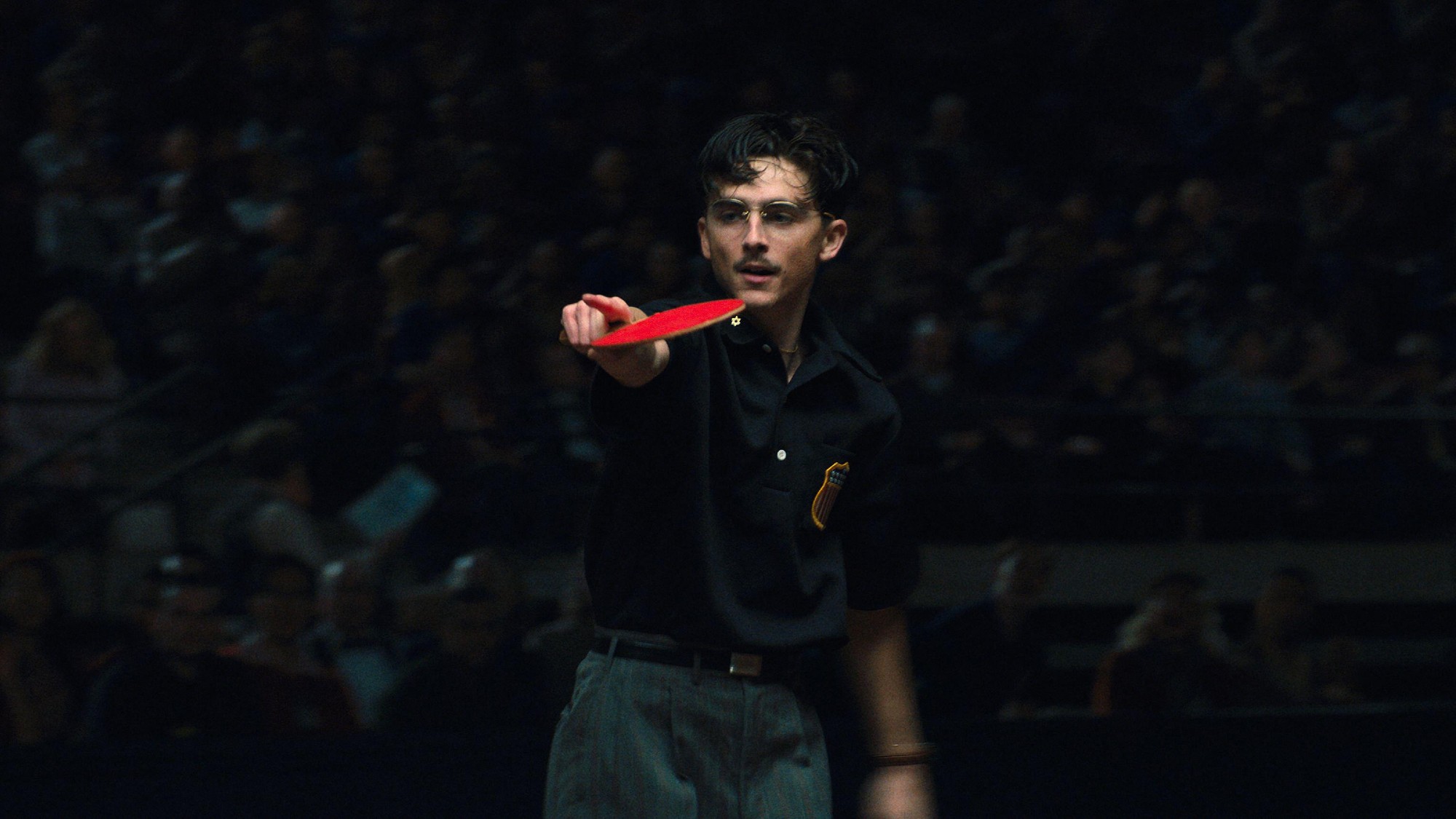50 years of Paul Smith
The designer celebrates his brand’s golden anniversary with trademark joy

Paul Smith calls at 4pm on the dot. “Mr Smith here!” he enthuses. “Are you alive? I’m alive, luckily, in this mad world we live in.” This same mad year also marks Smith’s 50th in the fashion industry: half a century on from the opening of his first shop in Nottingham, Paul Smith Vetements Pour Homme at 6 Byard Lane, which measured just three square metres in size. It’s 44 years since he travelled to Paris to showcase his first menswear collection, which would become the start of a biannual trip he would continue thereafter to make. And 41 years since the opening of his first London flagship on Floral Street in Covent Garden. Today the brand is sold across five continents and in 70 different countries.
“What a year to choose!” he can’t help but laugh over the phone. It’s an admirable sense of humour to have about the milestone’s tricky timing. “I mean, it’s just really difficult and complicated, even now we have shops that are still closed. It’s unprecedented, isn’t it? Mad. I mean, I think we [all] haven’t even seen the start of the casualties really.”
Like many, he says he’s probably losing money. “In my 50th year, having never lost any money ever!” It is frustrating, but on the flip side it’s also a pretty impressive admission given that the company has managed to remain independent all these years (Smith owns a majority stake with a Japanese license partner owning a 30% share), a rarity to be found in the business.
The Week
Escape your echo chamber. Get the facts behind the news, plus analysis from multiple perspectives.

Sign up for The Week's Free Newsletters
From our morning news briefing to a weekly Good News Newsletter, get the best of The Week delivered directly to your inbox.
From our morning news briefing to a weekly Good News Newsletter, get the best of The Week delivered directly to your inbox.
“I think the secret if there is one - which I don’t think there is - is I’m sort of OK at lots of things,” he says. “I think I’m an adequate designer, but I’m not sensational, which is good in my opinion because when you’re a sensational designer often you’ll have your Andy Warhol 15 minutes of fame which could be one year or 20 years but eventually you become out of fashion.
“I was just hoping I could survive. I’m back full circle now and I’m still just hoping I can survive. That just occurred to me right this second!”
‘The Paul Smith look’
This winter, Smith should have been travelling - which he used to do almost every week - even more than usual: to give talks at various universities and colleges about the new Phaidon book, titled Paul Smith, which celebrates his work through 50 presented objects and the anniversary itself. There’s also the introduction of a new capsule collection for men and women featuring archive graphics, such as his snapshot-like photo prints, from 1988 to 2002; and the launch of a namesake foundation. A digital platform, his personal archive full of advice received over the past 50 years will be made available in a bid to support upcoming young creatives.
A free daily email with the biggest news stories of the day – and the best features from TheWeek.com
Fortuitously, though, a good deal of the physical celebrations had taken place back in January at Paris Fashion Week with a big post-show party attended by his famous friends and customers, including actors Susan Sarandon, Jon Hamm, Sir Ian McKellen, Stanley Tucci and Bill Nighy – who, says Smith, is a “really lovely customer and friend, he always looks very elegant and simple the way he dresses”. Nighy has actually been mistaken for Smith in the past. “We’re blessed that although we’ve been going for a long time there is a lot of affection for the company and that’s quite wide-ranging, from more mature customers, similar to my age, going through to amazingly quite a lot of the younger generation who still think we have relevance which I think is probably the thing I’m most pleased with really.”
Case in point, on the morning of our interview, singer Niall Horan, formerly of One Direction, has been in touch. The late David Bowie was also a good friend and customer. And Smith has been dressing Jimmy Page from Led Zeppelin since the musician was about 18, as well as making bespoke suits for Harrison Ford and Daniel Day-Lewis for years. “I love the way he [Day-Lewis] dresses because he’ll arrive on a motorbike with his boots on and a bespoke suit and a denim shirt. It’s a very Paul Smith look.”
‘Classic with a twist’
The Paul Smith look is a distinctive one. Anchored in cool simplicity, mixing playful and colourful details with quintessential British tailoring, it’s “classic with a twist” - a phrase Smith came up with in the 1980s as a way to describe to people his specific style, which is always a little bit nostalgic but modern with it and best represented by the brand’s iconic stripe motif. “When I started out many, many men didn’t really think about fashion at all, they just wore clothes, not thinking about the shape or the cut or the colour,” he recalls. Conversely, his designs were the antithesis of the era’s then popular extreme aesthetics of Vivienne Westwood and Jean Paul Gaultier.
“I don’t really design attention-seeking clothes. Basically, [on the] outside it was a very nice jacket or good suit, or a nice pair of trousers, but when you looked inside there was always a floral lining or, on deeper inspection, you’d find one button hole was in a different colour, which of course has [all] been imitated absolutely massively - and people who do pattern lining, if you asked them, they’d probably say ‘well, yeah, we’ve always done them’. I’ll be there shouting, ‘not true! Somebody bloody started it and it was me!’”

Sir Paul Smith at the finale of his brand's golden anniversary show held in Paris earlier this year
‘I’m a shopkeeper at heart’
Smith was born in Nottingham on 5 July 1946 and had hopes of being a competitive cyclist. At 17, a road accident ended that dream and a new world presented itself (notably, though, the cycling connections have continued: Bradley Wiggins is a fan of Smith’s fashion and Paul Smith has collaborated with the cycling brand Rapha). Aged 21, he met his wife Pauline and, after living together for many years, they married in 2000 on the same day he received his knighthood, at 4pm and 11am respectively. It had been she who introduced him to visual arts. “She’s kept me normal, with not a big ego,” he chuckles. She was instrumental in teaching him garment design in those early days.
“Because my teacher was Pauline, the product that we made was really lovely and really special, really well made,” he praises. But does confess: “Over the years when you look at some of the things you’ve done, you probably gulp!” And he recalls standing at a Nottingham train station and seeing a man in a turquoise coat that was printed with dinosaurs. “It was one of mine and I was very tempted to push him under the train. I just thought that wasn’t one of my best seasons.” I point out I’m fairly sure my brother was a fan of that collection. He bursts out laughing down the phone: “It was probably him at Nottingham station!”
When Smith and Pauline first opened the business, the shop was open for just two days a week. He was 24 and thought of it as being merely a nice way of hopefully earning a living. On Mondays, Tuesdays, Wednesdays and Thursdays, he would work other jobs: as a photographer for various magazines (he’d picked it up from his father who was an amateur photographer), he did some styling, and also worked for a fabric company.
Originally, it had been owing to lack of fabric choice when he started out that the quintessential British aesthetic came to be: tweeds and corduroy were among the only fabrics one could get. Over time, everything changed: the rise of men’s grooming and the boom of menswear generally. Smith’s first Paris show took place in a friend’s apartment in 1976 on Boulevard de Vaugirard. “I think the most joyful thing as time has gone on is the fact that somehow we’ve managed,” he says. “I suppose I’m a shopkeeper at heart and I like things that are beautiful and elegant and special and I like things that are kitsch and fun and a bit silly so there’s a wide range of things that I’m interested in, so I think that equals a wide range of people.”
In 1993, a womenswear line was added, fragrance came next in 1998; and as the noughties dawned, stores appeared in Tokyo, Moscow and more. The business has grown to include childrenswear, accessories, shoes and home furnishings.
Proud of continuity
Business aside, one of the things Smith likes to do is write letters early in the morning. He’ll get in the office at 6am after a 5am swim and write. Today he managed six, but usually does up to 20. “I’m blessed with lots of lovely fans from around the world sending things so if there’s an address on it, I’ll normally write back.” Writing to each other is something he and Pauline have been doing for years. They don’t have a computer at home, she doesn’t have a mobile phone and Smith, who I had read didn’t have an email address, still doesn’t. “Very sensible I’d say. I think as a designer and as creative person for me at my age it works better if my head is free of clutter of looking at the screen all day.” His friends tell him the only button they press on their computer is “delete” anyway. But you can catch a serene picture of a tree or the sunshine over at his Instagram account and the company itself was quick to the e-commerce game in 2004. “The main thing is [it’s] not [being a] ‘luddite’, it’s just life on earth on your terms and in a way it’s braver to be the way we are,” he says.
It’s that kind of thinking that has surely earned him his lengthy list of honours and awards. A CBE in 1994, The Queen’s Award for Industry Export in 1995, an Honorary Freedom of the City of Nottingham in 1996 are just a few of the big ones, among many others, including the knighthood and that schedule clash. “That was a busy day for sure!”
Add to that he’s one of those designers who are not only lucky enough to have his stores sitting next to the great names in fashion in all the style capitals, such has been his ascension, he’s also met them. Yves Saint Laurent was an inspiration, of course it’s in the tailoring, and Smith was at the legendary designer’s final ever couture show. “Pauline has one of the very last Le Smoking couture [pieces] ever. The thing I’m most proud of is continuity really. The fact we’re even having this conversation now is so nice, it means there’s still a relevance for Paul Smith in this world after 50 years.”
-
 The Trump administration says it deports dangerous criminals. ICE data tells a different story.
The Trump administration says it deports dangerous criminals. ICE data tells a different story.IN THE SPOTLIGHT Arrest data points to an inconvenient truth for the White House’s ongoing deportation agenda
-
 Ex-FBI agents sue Patel over protest firing
Ex-FBI agents sue Patel over protest firingspeed read The former FBI agents were fired for kneeling during a 2020 racial justice protest for ‘apolitical tactical reasons’
-
 The real tragedy that inspired ‘Hamlet,’ the life of a pingpong prodigy and the third ‘Avatar’ adventure in December movies
The real tragedy that inspired ‘Hamlet,’ the life of a pingpong prodigy and the third ‘Avatar’ adventure in December moviesThe Week Recommends This month’s new releases include ‘Hamnet,’ ‘Marty Supreme’ and ‘Avatar: Fire and Ash’